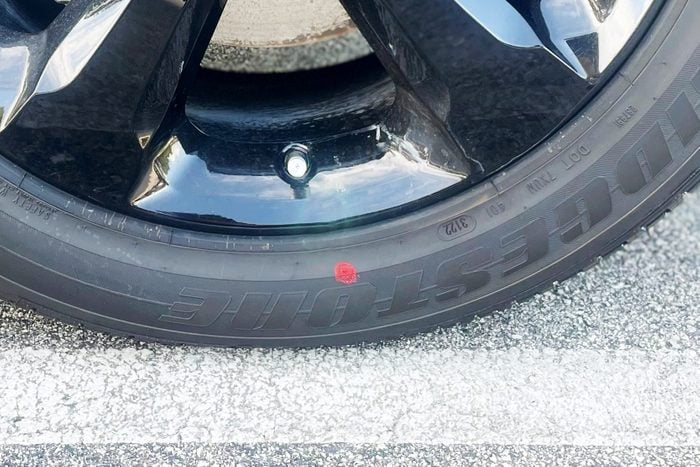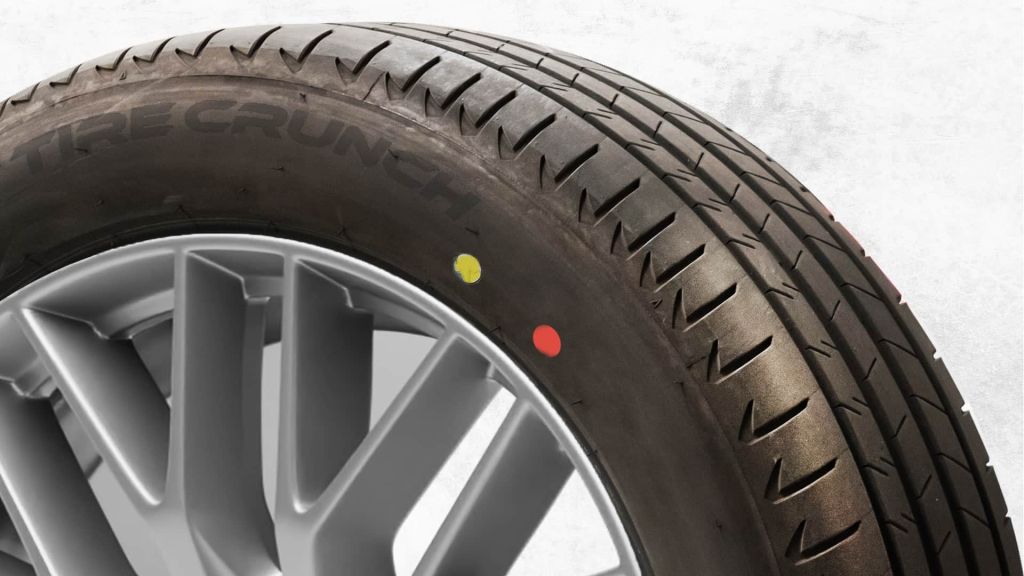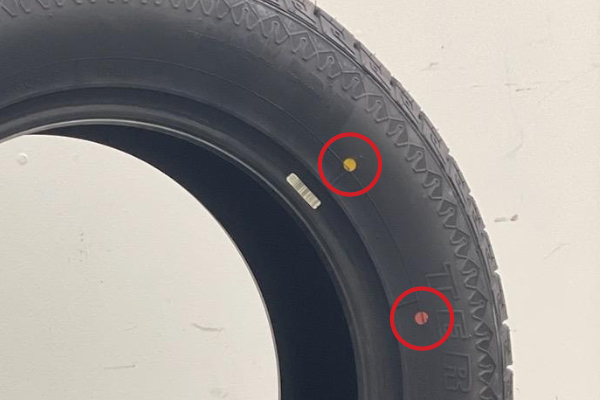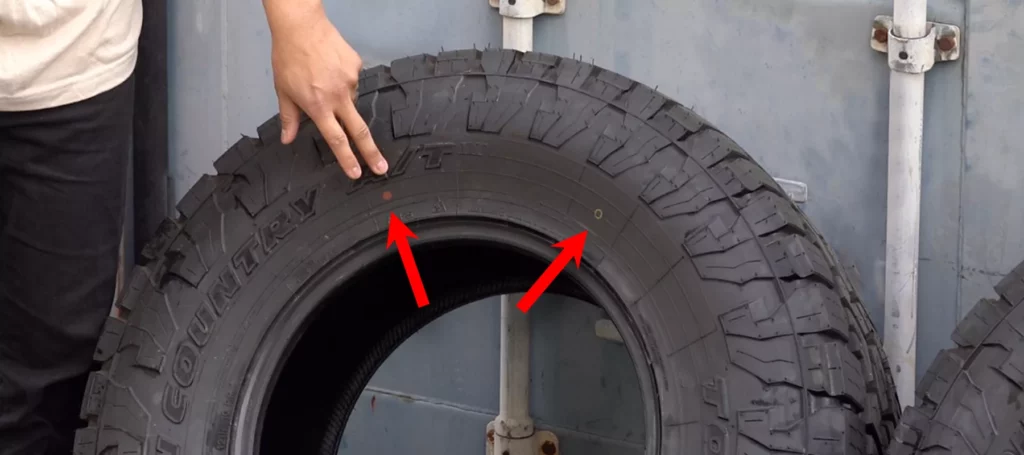If you’ve ever taken a close look at your car’s tires, you might have noticed small red and yellow dots on the sidewalls. At first glance, they might seem like random marks or part of the tire’s design. But believe it or not, these dots play a crucial role in maintaining your vehicle’s safety and performance.
Most drivers don’t think twice about these markings, but they’re not just decorative. In fact, these dots help technicians properly mount and balance the tires, ensuring your ride is as smooth and safe as possible. So, why are they there, and what exactly do they mean? Let’s uncover the truth behind these mysterious tire markings.

Why Do Tires Have Red and Yellow Dots?
The red and yellow dots on your tires aren’t just random splashes of color—they serve a specific purpose. These dots are part of a system that helps technicians balance the tire during installation. Let’s break down what each dot means and why it matters.
The Red Dot: Identifying the High Point
The red dot on your tire marks the high point of radial force variation. In simpler terms, it’s the point where the tire is the “flattest” or where it has the most bulge. This spot is typically located directly across from the highest point of the wheel itself.
Why does this matter? Well, wheels are rarely perfectly round. They often have slight variations or high spots, which can cause the tire to wobble or vibrate when driving. To counteract this, manufacturers mark the high point of the tire with a red dot.
Some rims also have a mark—like a small dot or notch—that indicates the wheel’s lowest point. By aligning the red dot on the tire with this mark on the rim, technicians can minimize vibration and ensure a smoother ride.
Video: What do these red and yellow dots mean!?
The Yellow Dot: Indicating the Lightest Spot
Now, let’s talk about the yellow dot. This mark indicates the lightest part of the tire. Why is this important? Tires aren’t uniformly weighted—some parts are slightly heavier than others. The yellow dot usually aligns with the tire’s valve stem, which is the heaviest point on the wheel.
By matching the yellow dot with the valve stem, technicians help balance the tire without adding extra weights. This simple step can make a significant difference in how smoothly the car handles on the road.
When Both Dots Are Present: Which One Matters More?
Sometimes, you might notice both a red and yellow dot on the same tire. So, which one should you prioritize when mounting the tire?
The general rule is that the red dot takes precedence. This is because minimizing vibration is typically more important than balancing weight. Therefore, if both dots are present, the technician should align the red dot with the wheel’s low point mark. The yellow dot becomes secondary in this scenario.
Why Balancing Tires Matters

Tire balance isn’t just about making the ride more comfortable—it’s also a critical safety feature. Unbalanced tires can cause:
- Vibration: You’ll feel it in the steering wheel or throughout the car.
- Uneven Tire Wear: Some areas of the tire may wear out faster, reducing lifespan.
- Strain on Suspension: Your car’s suspension system has to work harder to compensate.
- Reduced Fuel Efficiency: Your car needs more energy to maintain speed, burning more fuel.
Regularly balancing your tires helps maintain a smoother, safer driving experience. It also prolongs the life of your tires and saves you money on fuel.
Common Issues That Unbalance Tires
Even if your tires are balanced when installed, several factors can throw them off over time:
- Hitting Potholes: A hard impact can dislodge the balance.
- Curb Bumps: Even a minor bump can affect alignment.
- Tire Wear: Over time, tread patterns change, affecting balance.
- Temperature Fluctuations: Cold weather can cause tires to lose pressure, impacting balance.
To maintain proper balance, have your tires checked and rotated every 5,000 to 8,000 miles. Some manufacturers even recommend more frequent checks if you drive in rough conditions.
Are All Tire Dots the Same?

Interestingly, not all tire manufacturers use the same marking system. Some brands may use different colors or not mark their tires at all. Additionally, some tires might have a white dot instead, which usually marks the heaviest point. This can be confusing if you’re used to seeing the red and yellow system.
The best approach is to check your vehicle’s manual or consult with a tire professional when you see unfamiliar markings. Understanding these dots can help you make better decisions when purchasing or installing new tires.
What If Your Tires Don’t Have Dots?
If your tires lack these colored dots, it doesn’t necessarily mean they’re defective. Some tire manufacturers don’t mark their tires because they’re balanced differently during production. However, if you notice a wobble or unusual vibration, it’s worth getting them checked by a professional.
The Unexpected White Dot: What Does It Mean?
You may occasionally come across a white dot on a tire. This mark often indicates the heaviest spot and serves as a reference for technicians when balancing. However, not all tire brands use this marking, and it’s less common than the red and yellow dots.
If you’re unsure about any markings on your tires, always consult a tire technician. They’ll know how to interpret these marks correctly and ensure your tires are balanced for optimal performance.
Why Understanding Tire Dots Matters

Knowing what these dots mean can save you time and money when installing new tires. It ensures that your tires are mounted correctly, minimizing wear and maximizing safety. Plus, being informed helps you communicate better with technicians and avoid unnecessary charges.
Next time you spot those little red and yellow dots, you’ll know they’re not just random splashes of paint. They play a vital role in keeping your ride smooth and safe. Whether you’re buying new tires or just curious about your current set, paying attention to these details can make all the difference on the road.
Conclusion: The Importance of Tire Balance and Safety
Understanding the red and yellow dots on your tires is more than just satisfying curiosity—it’s about keeping your car running smoothly and safely. These markings help technicians align and balance the tires properly, reducing vibrations, enhancing comfort, and promoting tire longevity.
So, next time you take your car for a tire change, impress the technician by mentioning the dots and their purpose. It’s a small detail, but it shows that you care about your vehicle’s performance and safety. Don’t let those tiny dots go unnoticed—they’re your tire’s way of telling you how to get the best ride possible.


